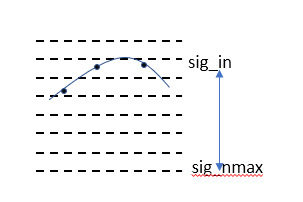I found this code on quantization on page 314 in the book Modern Digital and Analog Communication Systems by B.P.Lathi and Zhi Ding. I can understand only half of the code. Please, someone, help in explaining the code.
Code:-
function [q_out, Delta] = uniquan(sig_in, L)
% L = number of uniform quantization levels
% sig_in - input signal vector
% Function Output
% q_out - quantized output
% Delta - quantization interval
sig_pmax = max(sig_in); % finding the positive peak
sig_nmax = min(sig_in); % finding the negative peak
Delta = (sig_pmax - sig_nmax)/L; % quantization interval
q_level = sig_nmax + Delta/2 : Delta : sig_pmax - Delta/2; %defining q-levels
% Till here I understand the code. I am not able to understand from here.
% Mainly not able to understand what is sigp doing
sigp = (sig_in - sig_nmax)/Delta + 1/2; % convert into 1/2 to L+1/2 range
qindex = round(sigp); % round to 1,2,3..... L levels
qindex = min(qindex,L); % Eliminate L+1 as rare possibility
q_out = q_level(qindex); % use index vector to generate output
end
Ebook link - https://www.academia.edu/36135973/Book_Modern_Digital_And_Analog_Communication_Systems_4th_edition_by_Lathi


sigpin the code? $\endgroup$